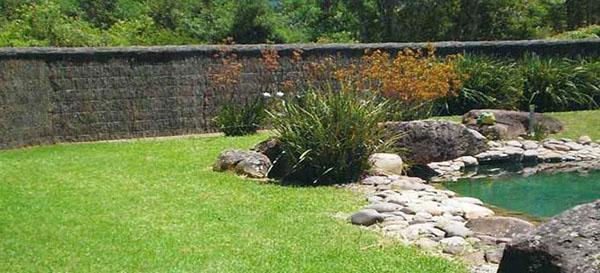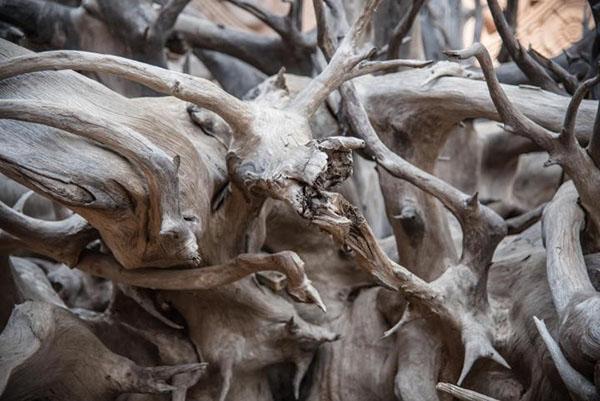Ideas for homemade fences from foreign farmers
 If you are thinking about installing a fence on your own, then this article is for you. We will tell you about the traditional options for buildings for fencing yourself or any object, consisting exclusively of natural materials.
If you are thinking about installing a fence on your own, then this article is for you. We will tell you about the traditional options for buildings for fencing yourself or any object, consisting exclusively of natural materials.
The world that surrounds us is huge.
You can wall yourself
and lock yourself out of this world,
but you can't lock the world itself.
D.R.R. Tolkien. English writer (1892 - 1973)
Types of homemade fences
In the modern world, there are many different materials that can be used to fence a site. Our attention was attracted by the simplest and least costly ways of fencing summer cottages, private small farms. The presented options for fences came to us from past times and today they are extremely rare.
Brushwood hedge

Stump fence
 Such fences are most often installed near woodlands, the trees of which serve as building materials. This fence can be as tall as a horse, incredibly strong and difficult to overcome. It is made from tree stumps. The roots are trimmed to ensure that all parts fit snugly together. Or you can uproot the stumps and set them up with a solid line with their roots. Any gap in such a fence can be filled with a root cut from another stump.
Such fences are most often installed near woodlands, the trees of which serve as building materials. This fence can be as tall as a horse, incredibly strong and difficult to overcome. It is made from tree stumps. The roots are trimmed to ensure that all parts fit snugly together. Or you can uproot the stumps and set them up with a solid line with their roots. Any gap in such a fence can be filled with a root cut from another stump.
A fence can also be made from tree trunks that have been sawn to the same length and placed vertically.
Snake or zigzag hedge
 This hedge is also called zigzag, worm, grasshopper, sloth, or virgin fence.
This hedge is also called zigzag, worm, grasshopper, sloth, or virgin fence.
Beams made from medium-sized logs or young trees are placed one above the other at an angle, crossing at the ends. A pair of long stakes driven into the ground at the intersections hold the fence upright.
Wicker fence
 This fence is of the decorative type. Accurate measurements are very important when building a building. For those who decide to make it with their own hands, you will need:
This fence is of the decorative type. Accurate measurements are very important when building a building. For those who decide to make it with their own hands, you will need:
- square pillars 10x10 cm made of hardwood;
- smaller supports, half the diameter and the same length;
- boards 3 m long, 7 cm wide and 1.5 cm thick, which will be woven between the support posts.
The supports (especially their ends) must be treated against rotting after being dug into the ground. Planks should be placed as close to each other as possible to ensure maximum protection and privacy.
Palisade
 Wooden palisade fences are difficult to make, require a certain level of skill and are considered a prestigious option for a fence. Parts are usually made to order from untreated wood, prepared for painting. The painting itself is done after installation. Due to the large number of parts, the time required for assembly, and therefore the high costs, palisade fences are very rare today.
Wooden palisade fences are difficult to make, require a certain level of skill and are considered a prestigious option for a fence. Parts are usually made to order from untreated wood, prepared for painting. The painting itself is done after installation. Due to the large number of parts, the time required for assembly, and therefore the high costs, palisade fences are very rare today.
Fence dryer
 This design looks more like a drying rack than a real fence.Wooden poles, 2.5 meters high, are dug into the ground by 60 cm and installed at intervals of a little more than a meter. Then 3 smooth crossbars are nailed to them horizontally. They run at an equal distance from each other in the upper, central and lower parts of the pillars. The distance from the ground must be at least 30 cm.
This design looks more like a drying rack than a real fence.Wooden poles, 2.5 meters high, are dug into the ground by 60 cm and installed at intervals of a little more than a meter. Then 3 smooth crossbars are nailed to them horizontally. They run at an equal distance from each other in the upper, central and lower parts of the pillars. The distance from the ground must be at least 30 cm.
Then the hooks are screwed to the top and bottom bar at equal intervals. A wet fabric is stretched between them, which will dry in this position. This procedure allows the fabric to dry quickly and prevents shrinkage while maintaining its true size. If you want to hang your fence in the long run, you can attach the fastening rings to the tarp (or similar material) and hook it onto the hooks.
Fence for a summer residence - video